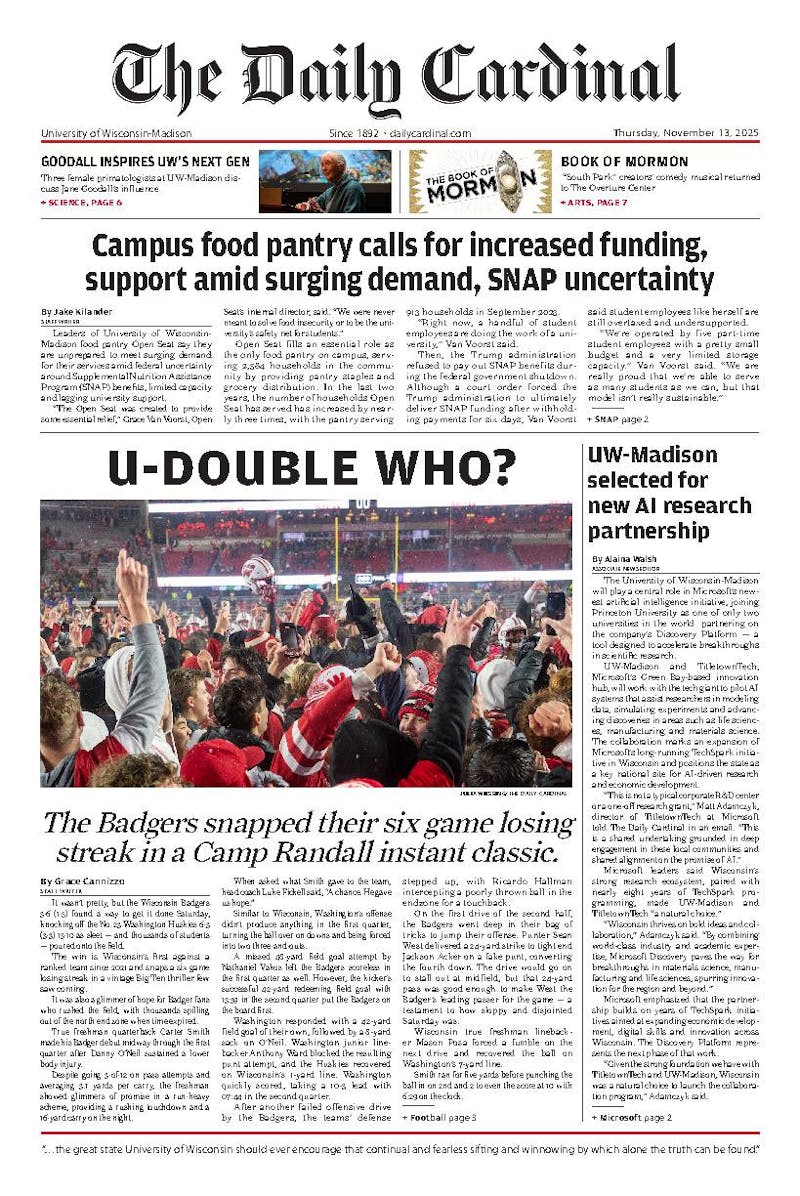Love it or hate it, ""Jackass"" is a powerful force—it was the show that made real-life violence funny again, revitalized the art of low-brow humor and enraged every moral conservative. When they released their first movie in 2001, reactions were clearly split—at least half the audience was cackling uncontrollably along with the performers, some walked out in disgust and one or two probably threw up in the aisles.
Now, as they appear to have discovered they have no marketable talents beyond self-mutilation and laughing at each other's misfortune, the ""Jackass"" crew has reunited to produce an effort that can leave no neutral parties. ""Jackass: Number Two"" is the most obscene and polarizing work the team has ever produced—it will turn fans into worshippers, make objectors violent and destroy any control the queasy have over their stomachs.
The film follows the same format as the television show and ""Jackass: The Movie."" Johnny Knoxville and his team of daredevils—including Bam Margera, Steve-O, Chris Pontius, Ryan Dunn, Preston Lacy and Jason ""Wee Man"" AcuAa—perform a series of stunts, ranging from the painful (medicine ball dodgeball) to the disgusting (a leech on Steve-O's eyeball) to the death-defying (Knoxville charged by a giant yak).
There is no plot to the film, but the theme appears to be to take the most memorable sketches from ""Jackass: The Movie"" and make them even stupider and more violent. Where the first film shot riot-control beanbags at Knoxville, gave them makeup to appear as shoplifting old men and shoved a toy car up Dunn's rectum, ""Number Two"" puts them in front of a rubber-bullet claymore mine, adds sagging breasts and scrotums to the elderly makeup and introduces an inverse beer bong known as ""the butt-chug.""
Fans of the team's post-""Jackass"" exploits will be rewarded, as the team sticks to its strengths for the sketches. Steve-O and Pontius continue their ""Wildboyz"" exploits with human-bait shark fishing, and Margera expands his ""Viva La Bam"" parental torment. It's also enjoyable to see Knoxville back as a punching bag and anaconda bait, chiefly because it fulfills the dream of anyone who sat through ""The Ringer"" or ""Dukes of Hazzard.""
Of course, all of the team's pain is satisfying—because of how utterly dislikable most of them are. After six years the team's tattoos and scars make them look like a MA¶tley CrA¼e cover band, and all the blows they have suffered to the head have apparently halted mental development. They are given to amusing commentary here and there, but for the most part they're happy to punch each other in the crotch over and over.
The humor may be juvenile in ""Jackass,"" but it never gets old—the film is filled with adrenaline bursts during the first quiet seconds of each new sketch. No other comedy team can put as much anticipation into the calm before the storm, the utter certainty that whatever happens next it will be worse than what preceded it.
""Jackass"" may have been out of commission for a while, but this film shows that by their definition it was time well spent. The acts are more ambitious, the pain more apparent and the gross-out factor pushed to the limit—a continuation of a tradition that, if not inspired, is still good for a cheap laugh.





